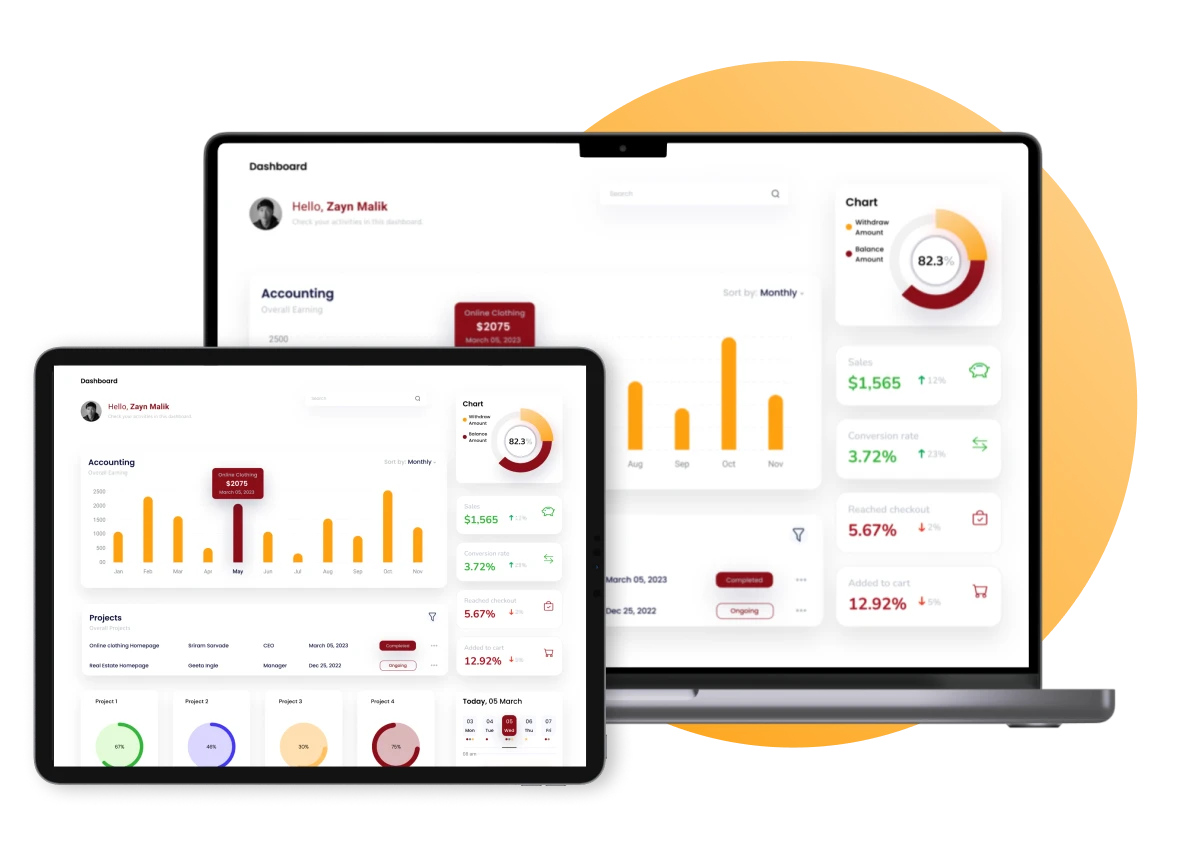Imagine pouring time, pera, at mga resources into projects only to wonder where all the profits went. For many Filipino businesses, the answer lies in job costing—a powerful yet frequently overlooked method to track every peso spent on each project.
With job order costing, you’ll finally understand where costs go, enabling you to set precise prices, boost profits, and make better business decisions. Curious enough? Let’s dive into the definition and how to calculate job costing!
Key Takeaways
|
Table of Contents
What is Job Costing?
Job costing is a method businesses use to track the specific costs of individual projects. In particular, this approach helps industries with custom projects like construction and manufacturing to accurately monitor expenses, ensure each job stays within budget, and ultimately maintain profits.
By knowing exactly what each job costs, businesses can confidently set accurate prices, avoid unexpected expenses, and keep their projects profitable. With job costing, companies gain a clear view of all costs tied to a specific job and can assign them directly to each task or unit involved.
Unlike simple estimates, this approach goes beyond guessing expenses, giving businesses precise data they can rely on. By truly understanding the real costs of each project, companies are better equipped to make informed financial decisions, set fair prices, and run their operations more efficiently.
Key Elements in Job Costing
To apply job costing accurately, companies need to focus on three essential components that form the basis of this cost-tracking method:
| Elements | Description |
|---|---|
| Direct Materials | These are the costs of raw materials directly used in a project. Tracking material expenses helps companies monitor spending and avoid overspending. |
| Direct Labor | This includes wages for employees working on the job. Calculating labor costs precisely is essential, as it often forms a significant part of the project budget. |
| Overhead | These are indirect costs like utilities, rent, and equipment depreciation. While not tied to specific tasks, overhead is crucial for supporting the project as a whole. |
Together, these elements provide a detailed breakdown of job costs, allowing businesses to evaluate profitability more precisely and make well-informed financial decisions. Properly managing each component enables companies to identify cost-saving opportunities.
Benefits of Job Order Costing
Using a job costing system provides several valuable benefits for businesses, especially those managing multiple projects:
- Informed Decision-Making: This allows businesses to evaluate the profitability of each project, allowing them to accept or decline jobs based on projected returns.
- Accurate Pricing: By tracking detailed costs, companies can calculate precise selling prices, ensuring they cover expenses while remaining competitive in the market.
- Profit Tracking: It allows businesses to monitor profit per-project basis, providing clear financial insights essential for growth and sustainability.
- Cost Control: The system helps track expenses closely, helping companies identify where they might save money and streamline operations.
- Efficiency Analysis: It helps businesses assess their production processes, pinpoint areas for improvement, and allow for better resource optimization.
- Trend Analysis: Over time, this offers insights into cost trends, enabling businesses to plan more effectively for future projects.
Overall, job costing gives businesses greater control over their finances, helping them set accurate prices, improve profitability, and make strategic decisions that support long-term success.

Overcoming Job Costing Challenges
Job costing brings many benefits, but managing it can be tricky, especially when multiple factors influence cost allocation. Variables like fluctuating material prices, indirect costs, and labor hours can complicate the process, making it essential to maintain accuracy to prevent potential losses.
One way to handle these challenges is to establish clear procedures for tracking costs and regularly review expenses tied to each project. Ensuring that cost categories, such as materials, labor, and overhead, are updated frequently helps keep calculations precise.
Using accounting software can make job costing easier by automating calculations, reducing errors, and simplifying expense tracking. With the right tools, businesses can keep job costs accurate and have better control over their project budgets.
How to Calculate Job Order Costing
To determine job costing accurately, businesses need to break down direct materials, direct labor, and overhead costs for each project. Here’s an example of how this works:
- Direct Materials Cost:
- Raw materials specifically used for the project: PHP 10,000
- Direct Labor Cost:
- Employee hours worked on the project: 50 hours
- Hourly wage rate: PHP 200
- Total Direct Labor Cost = 50 hours * PHP 200 = PHP 10,000
- Overhead Cost:
- The company applies a predetermined overhead rate of PHP 150 per labor hour.
- Total Overhead Cost = 50 hours * PHP 150 = PHP 7,500
Adding up each cost category provides the total project cost:

Simplify Job Costing With HashMicro’s Accounting Software
Managing job costing can feel like a lot, right? Especially when you’re balancing multiple projects, handling different expenses, and dealing with complex budgets. That’s where an ERP module, which includes accounting software, comes in—it provides a clear, easy-to-use system to track every project cost.
HashMicro’s Accounting Software steps in here, offering tools built specifically to simplify job costing. Imagine cutting down on manual work and getting real-time insights that make tracking costs, checking on progress, and staying financially on track so much easier.
Some of the features are:
- Multi-Level Analytical Tools: This feature lets businesses compare financial statements by project, branch, or department. It gives a detailed view, helping companies track costs and understand profitability across areas.
- Profit & Loss vs. Budget & Forecast: This tool makes monitoring actual profit and loss easy against budgeted figures. It helps keep projects on budget and supports better financial planning.
- Cashflow Reports: HashMicro’s cash flow reporting offers real-time views of cash inflows and outflows. This steady cash tracking makes it easier to cover expenses and keep operations smooth.
- Automated Currency Update: This feature keeps currency rates up-to-date automatically for companies with international transactions. It avoids financial discrepancies and ensures accurate job costing across currencies.
With all these features combined, HashMicro’s Accounting Software is a powerful tool that makes job costs easier. Ultimately, as one of the best accounting software philippines, HashMicro lets you focus on what you do best with the confidence that your finances are in good hands.
Conclusion
By knowing job costing, you can see where each peso goes, set fair prices, keep budgets in check, and avoid unexpected costs. Adding an ERP module such as HashMicro’s accounting system makes job costing even easier, allowing businesses to focus on growth confidently.
Using the right software can make job costing smoother by providing real-time insights and reducing errors. This way, businesses stay on top of their finances and make smart decisions at every project stage. Want to see how it works? Schedule a free demo today!

Frequently Asked Questions
-
What is an example of a job cost?
A job cost includes all expenses related to a specific project, such as materials, labor, and overhead. For example, building a custom piece of furniture would involve costs for wood, wages for workers, and equipment use.
-
How do you calculate job cost?
Calculate job cost by adding direct materials, labor, and overhead allocated for a project. This total gives an accurate view of all expenses involved, allowing for precise pricing.
-
How to make a job costing system?
To set up a job costing system, define cost categories like materials, labor, and overhead. Then, track and assign each cost to specific projects to monitor expenses accurately.








































